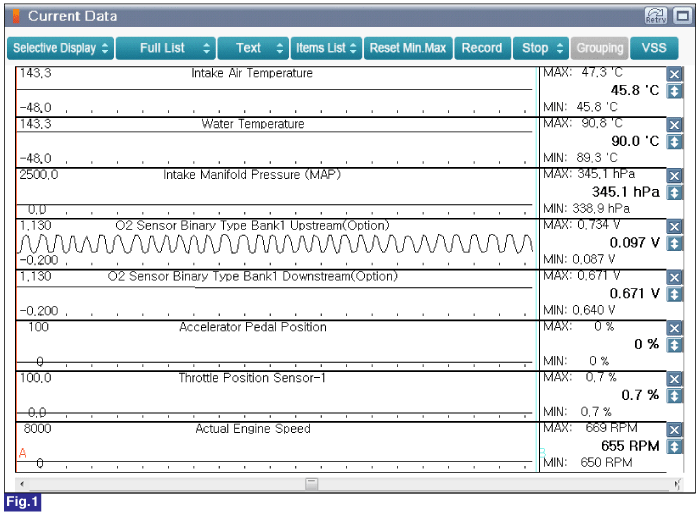Check MAPS and ECTS for the following conditions:
- Contamination, deterioration, Poor connection or damaged harness.
- The MAP signal displayed on the GDS should increase AS engine speed increases.
- The engine coolant temperature displayed on the GDS should close to the actual coolant temperature.

Fig.1) Engine Idle after Warm Up(Engine Sensor Status)




